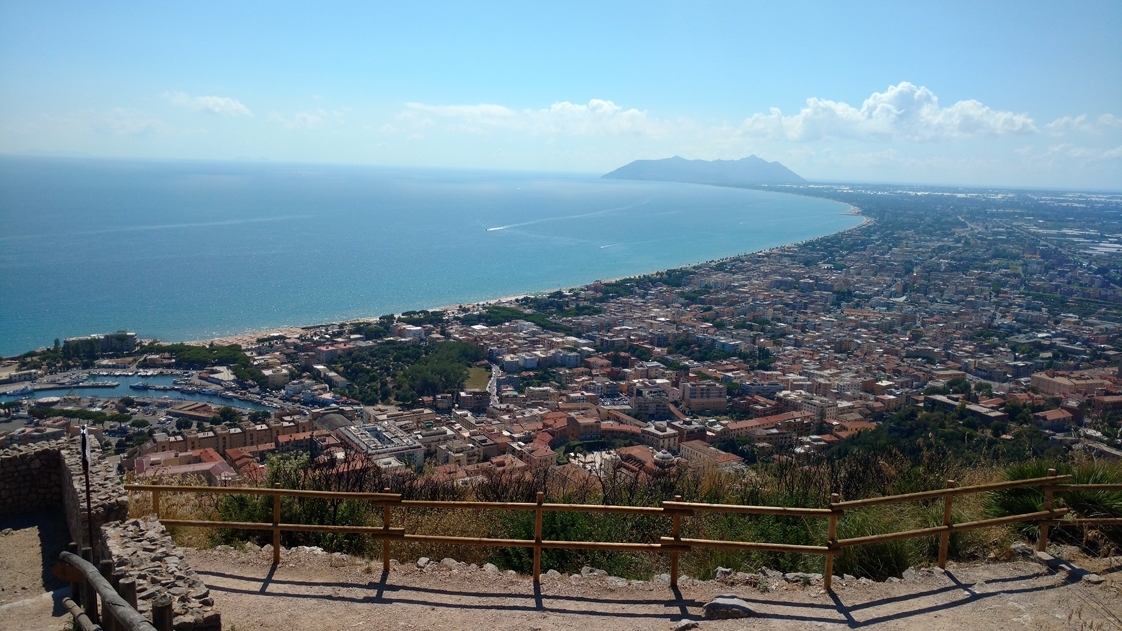Terracina is a lovely city in the province of Latina along the coast of the Tyrrhenian Sea which dates back to prehistoric times. In fact, the skull of a Neanderthal man was discovered in one of the caves, Guattari Cave, found in the surrounding area.
It has many beautiful beaches and is located on what is known as the Ulysses Riviera, so called because according to the The Odyssey, Odysseus (Ulysses) landed here and his men were turned to beasts by the sorceress Circe who lived on a mountain now called Monte Circeo. It is also associated with the legend of Aeneas who escaped from Troy and arrived in this area.
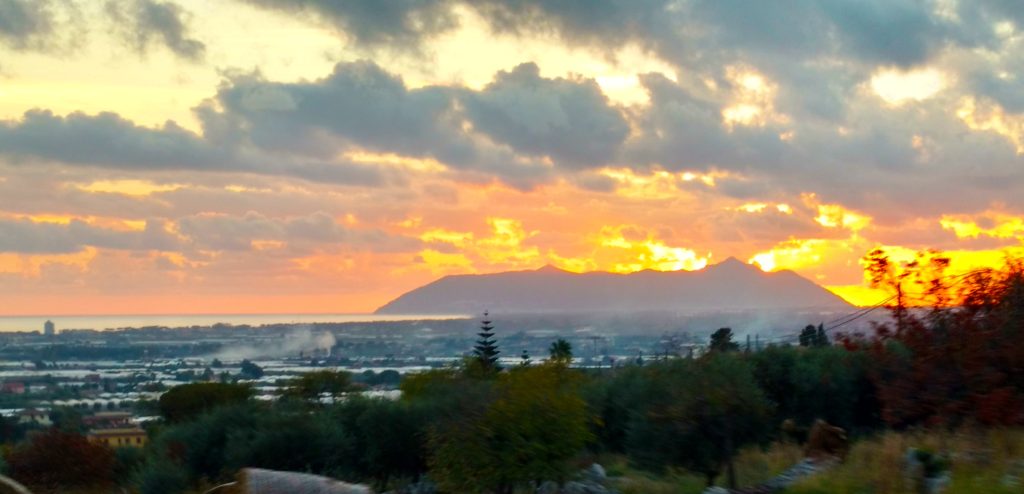
Monte Circeo
It is believed Terracina was first occupied by the Etruscans but then taken over by the Volsci who called it Anxur and built fortifications against the Romans, who later conquered them in 406 BC. Ancient walls and towers can still be seen in various locations in the city, including stretches of the ancient Via Appia. It was a well-known resort town to the ancient Romans as is evidenced by the ruins of temples, theaters, baths, and villas belonging to such Roman emperors as Galba and Tiberius. There are mineral springs still in use, except one where it was discovered that it contains arsenic.
Built on swampland known as the Pontine Marshes, Terracina remained a place riddled with malaria-carrying mosquitoes for centuries despite attempts to drain the waters first by the Volsci, then ancient Rome, until Benito Mussolini drained the marshes by building canals leading to the sea.

Terracina Historic Center
In the main piazza in the historic center you can find part of the ancient Roman Forum, and the Cathedral of San Cesareo (formerly known as the Cathedral of San Pietro), where Pope Urban II was elected back in 1088 AD, which was built from materials from an ancient temple.
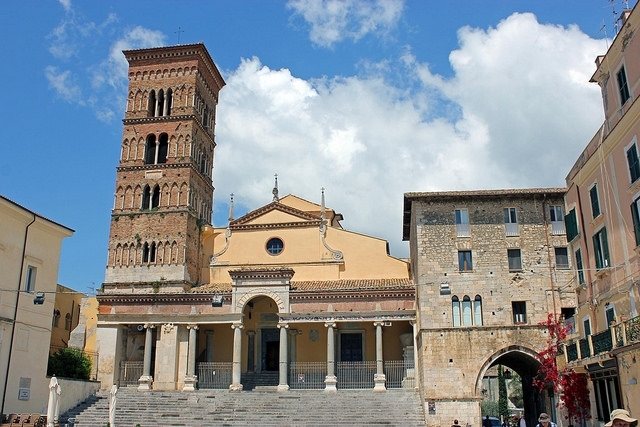
Cathedral of San Cesareo
Photo Credit: Malcolm Bott @Flickr.com

Monte Leano
Terracina’s harbor, built during the reign of emperor Trajan, was of great strategic importance in ancient Rome. It was very difficult to cross the marshes until Via Severiana was built to connect Ostia to Terracina.
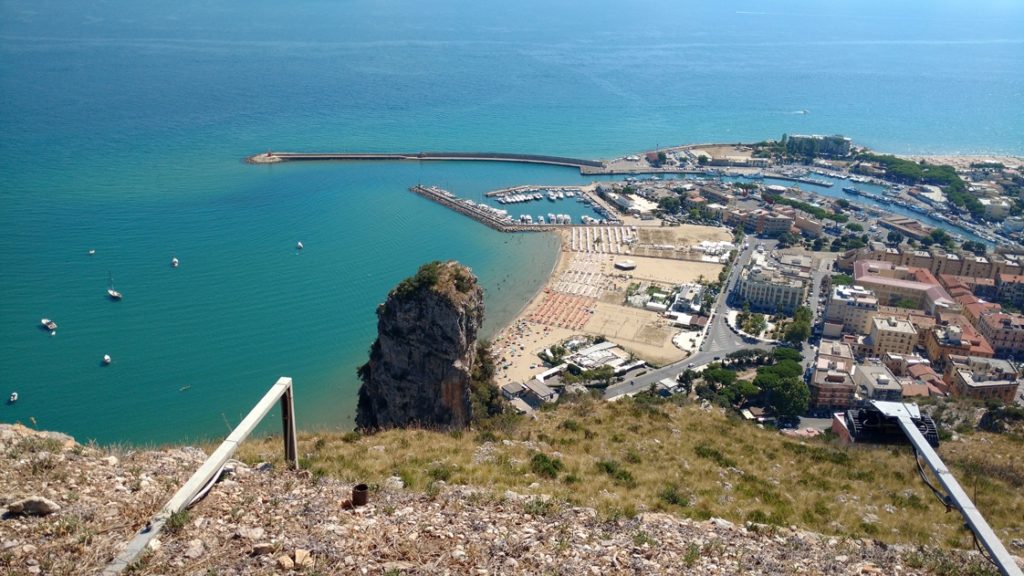
Terracina’s Old Harbor
After the fall of the Roman Empire, Terracina began to decline due to malaria outbreaks and constant attacks by pirates from Africa. It began its recovery in the late 18th century when Pope Pius VI expanded the harbor and Terracina became the political and administrative center of the Pontifical trade.
Today, Terracina is a wonderful seaside resort area with many restaurants, hotels, and places of interest to visit such as the Pontine Islands where you can take a shuttle boat to the big island of Ponza, go hiking in Circeo National Park, and admire various ruins.
The Temple of Jupiter (Jove) Anxur
One of the most visited ruins of Terracina is the Temple of Jupiter Anxur, known in Italian as Il Tempio di Giove, which was built during the 1st century BC high up on a cliff. The name Anxur means youth. Although it is known for being dedicated to the god Jupiter as a child, questions remain as to why there are various inscriptions bearing the name of the goddess Venus.
The panoramic views from the top of the hill are amazing – you can see all of Terracina facing north towards Monte Circeo, including the Pontine Islands, and on a clear day you can see all the way down south to Ischia and Capri.
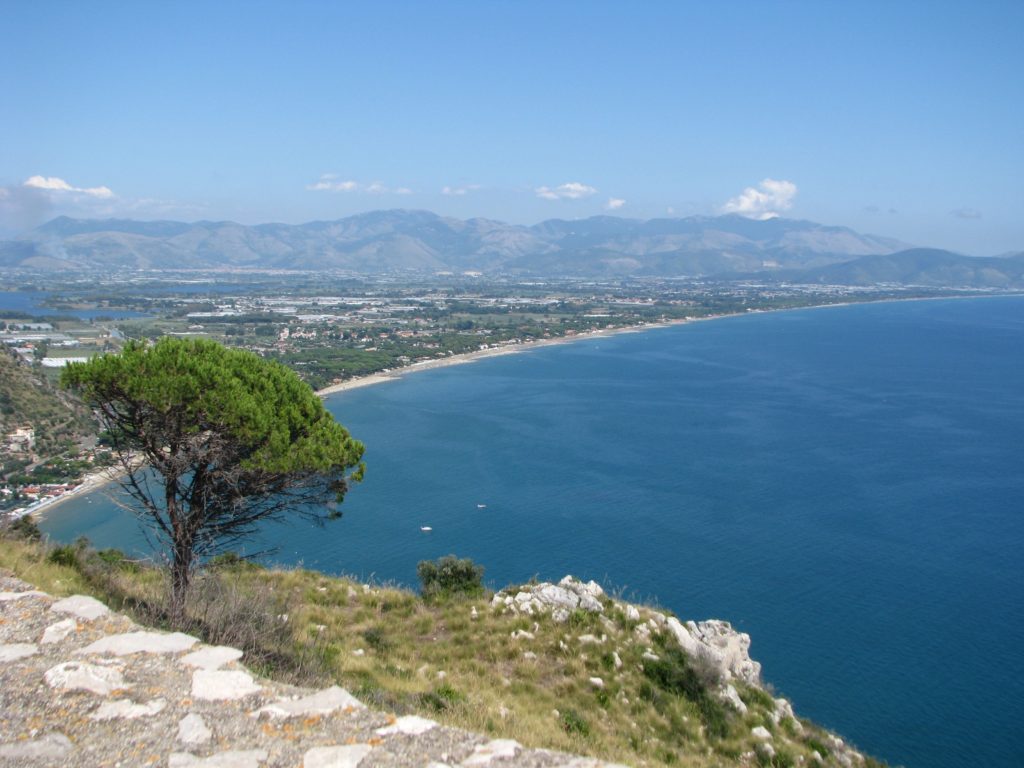
View south towards Fondi and Sperlonga from the top of Monte Sant’Angelo
After the fall of the Roman Empire, the temple was destroyed by a fire. During the Middle Ages, it was used as a monastery dedicated to St. Michael the Archangel which is why this hill is named Monte Sant’Angelo. It was later abandoned during the 16th century when Terracina became less populated.
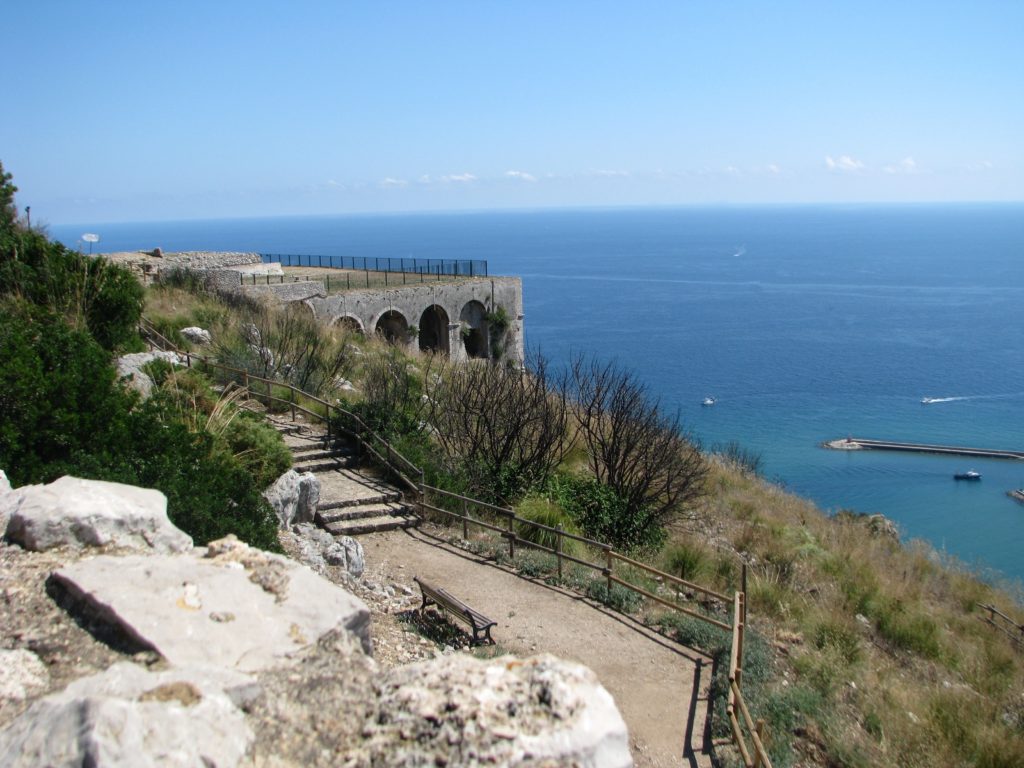
Temple of Jupiter Anxur overlooking the Gulf of Gaeta
It is a long walk from the ticket office entrance to the top of the hill where the temple is so it is best to visit on a cool day.
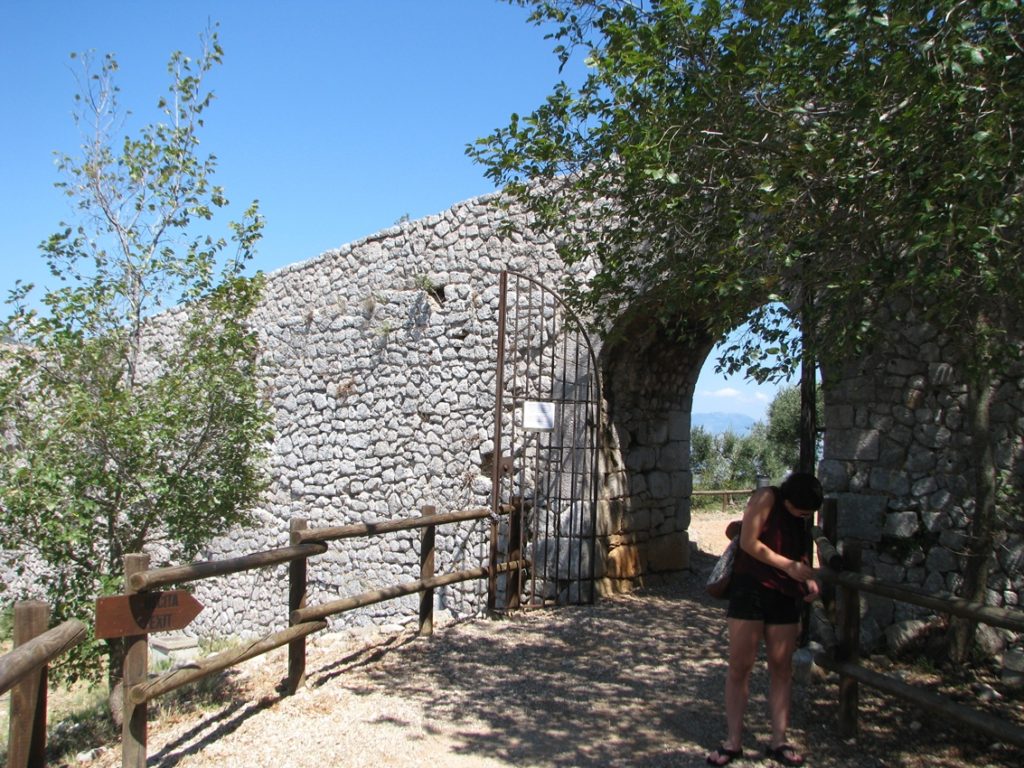
One of the roads leading to the Temple of Jupiter Anxur
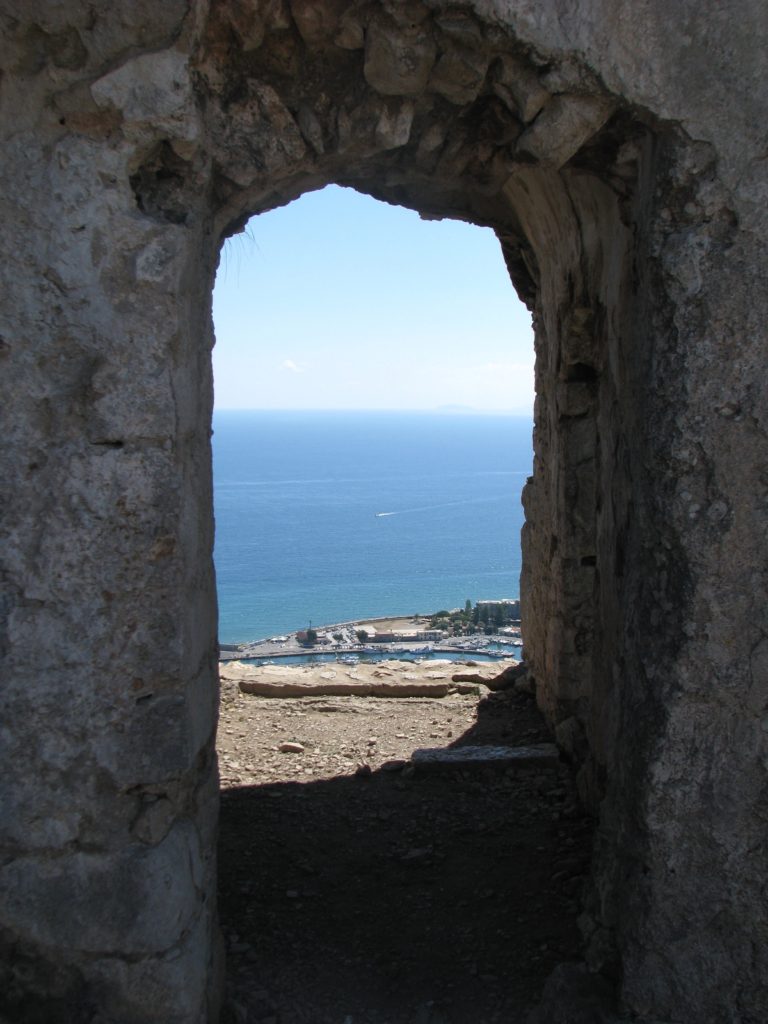
Looking out of the Temple of Jupiter Anxur to the old harbor of Terracina

Temple of Jupiter Anxur with Monte Leano in the background
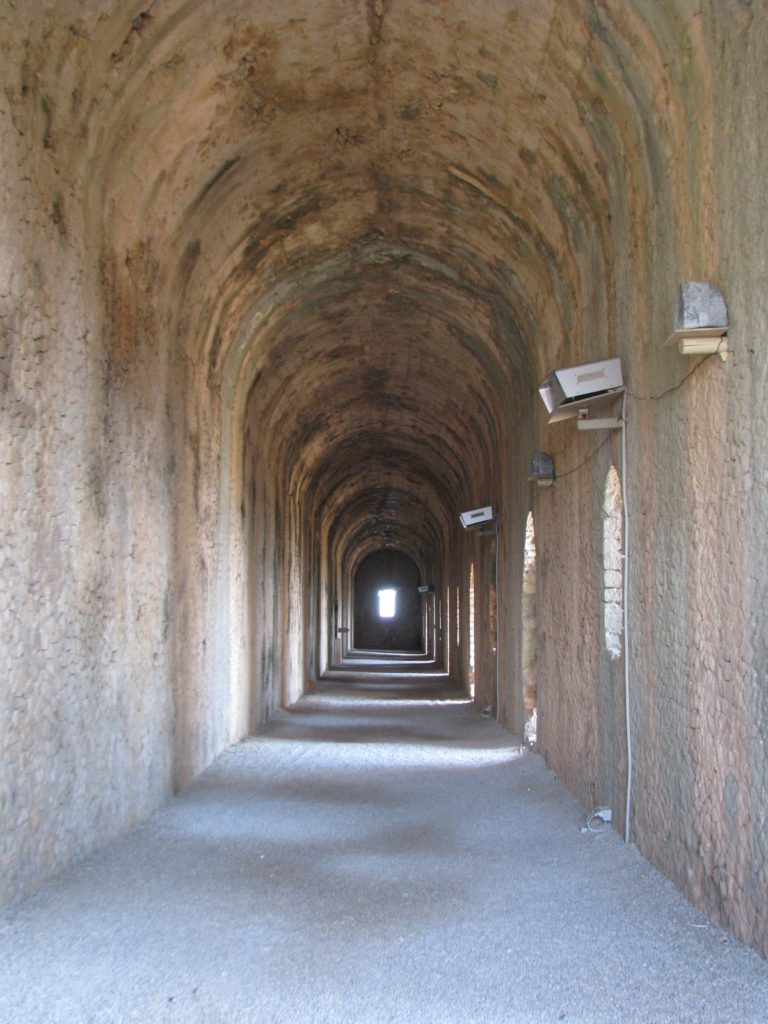
Covered gallery in the Temple of Jupiter Anxur that was probably used for processions.
The day we visited the temple was a hot one. Fortunately while walking through the surroundings we came upon a small restaurant/cafe on the way where we were able to enjoy some icy cold gelato. At the end of our self-guided tour, we watched an informative movie in the air-conditioned building where we had purchased our tickets.
For travel arrangements, go to Travel and Tourism.
Subscribe to my blog so you don’t miss anything!
Follow me on Facebook @LaCiociaraItaliana, on Instagram @La_Ciociara_MPG, on Twitter @La_Ciociara, and on Pinterest @LaCiociara2016 .

